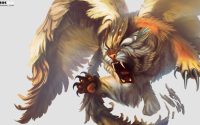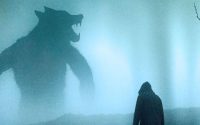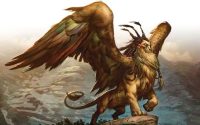Mythical Creature – The Unicorn
The mythical creature known as a unicorn is a mythological creature of the animal kingdom. It is considered a symbol of power, beauty and strength and is a legendary animal that can be found in myths around the world.
Ancient Chinese mythology
The Asian unicorn is one of the most fantastic creatures in ancient Chinese mythology. Its appearance was considered a sign of greatness and great fortune. Despite its fierce appearance, the unicorn was gentle and did not harm animals.
According to Chinese myth, the Asian unicorn is a benevolent creature that possesses the power to prevent disasters. These magical beasts are viewed as one of the four spiritual creatures in the Chinese tradition.
Ancient Greek mythology
Unconquered by man, ferocious and fast, the unicorn has always been considered an elusive beast. The animal was also associated with magical powers and healing properties. It was believed to be able to purify poisonous water with its horn.
Unicorns are often depicted in early artworks and texts. They can be seen in a number of ancient catalogues of animals, battling lions, elephants and other beasts.
In medieval times, unicorns were thought to be elusive. This misconception was strengthened by the proliferation of bestiaries, illustrated books of the natural world.
Ancient Roman mythology
In Ancient Roman mythology, the unicorn is a mystical beast. It is often depicted as a horned horse with cloven hooves. The unicorn is said to be a descendant of the rhinoceros, and was the subject of numerous ancient tales.
While unicorns are rarely mentioned in the Bible, they are referred to in the Old Testament. They were thought to be strong and powerful, and could protect those who drank from their horns. However, it was not unconquerable, and was usually killed by hunters.
Ancient Greek narwhal mythology
The unicorn was a mythical creature whose horns were thought to have magical properties. It was also known for its healing powers and purity. In the Middle Ages, it was considered a symbol of chivalry. Unicorns were commonly depicted in medieval art and literature as white horses.
Ancient Greeks believed unicorns were real. Several writers reported seeing one. Ctesias, a fifth-century-BC physician, wrote about the animal. He wrote that it had a long, straight horn with spiral grooves.
Ancient Greek kirin mythology
Kirin, or qi-qi in Chinese, is a mythical creature that is associated with the Chinese culture. It is a hooved chimerical creature that looks a lot like a lion. Some believe that it is a good omen, and that it is a sign of luck or a harbinger of prosperity.
The kirin is not a beast of burden, nor is it an apex predator. However, it is a benevolent being. Known for its good sense of judgment and a penchant for punishment, it is also a protector of just humans. Typically, it only appears in places ruled by wise leaders. They are said to grant good luck to the rightful owners and to punish the wicked. In some stories, they even have an uncanny ability to detect guilt.
Ancient Greek re’em mythology
Greek mythology has shaped art and literature for thousands of years. These ancient stories include mythical creatures, heroes and monsters. The stories also address important social issues.
Ancient Greeks believed that each part of their life was ruled by a god. These deities were often portrayed as ordinary people. They were not afraid of death, illness or deprivation. This led to the belief that happy gods meant good things.
Ancient Greeks often left gifts for their gods at public shrines. There were special places in their homes where they worshipped the gods. Eventually, temples were built for each individual god.
Ancient European mythology
The unicorn was an important mythological creature in European culture. Its appearance is found in many ancient images. They were also portrayed in medieval art and literature. Their horns were used as a symbol for purity and chastity. In addition, the unicorn was considered to have healing powers.
Ancient writers such as Aristotle and Pliny the Elder wrote about the unicorn. Some of their descriptions include the animal’s short horns, its black and red coat, and its cloven hooves.
Ancient Scandinavian mythology
The unicorn is a mythical creature of legend. Originally a mighty woodland creature, it was known to possess many valuable abilities. Among these, its horn is said to be a potent antidote to poisons. It was also said to be an incarnation of purity.
Unicorns first appear in ancient Mesopotamian artwork, and they were later found in European literature. In the Middle Ages, they were portrayed as a magical white horse.
Ancient Egyptian mythology
Unicorns have been described by ancient civilisations, from Greek literature to the Indus Valley Civilisation. Despite their lack of mention in the Bible, there are still tales about the unicorn. It is a powerful symbol, known to purify water and possess healing powers. The unicorn is believed to be an allegory for Christ.
One of the most famous descriptions of the unicorn is from the writer Ctesias, who lived in the 4th century BCE. He wrote of this magical animal as a white, antelope-like creature with a horn that a cubit and a half in length.



